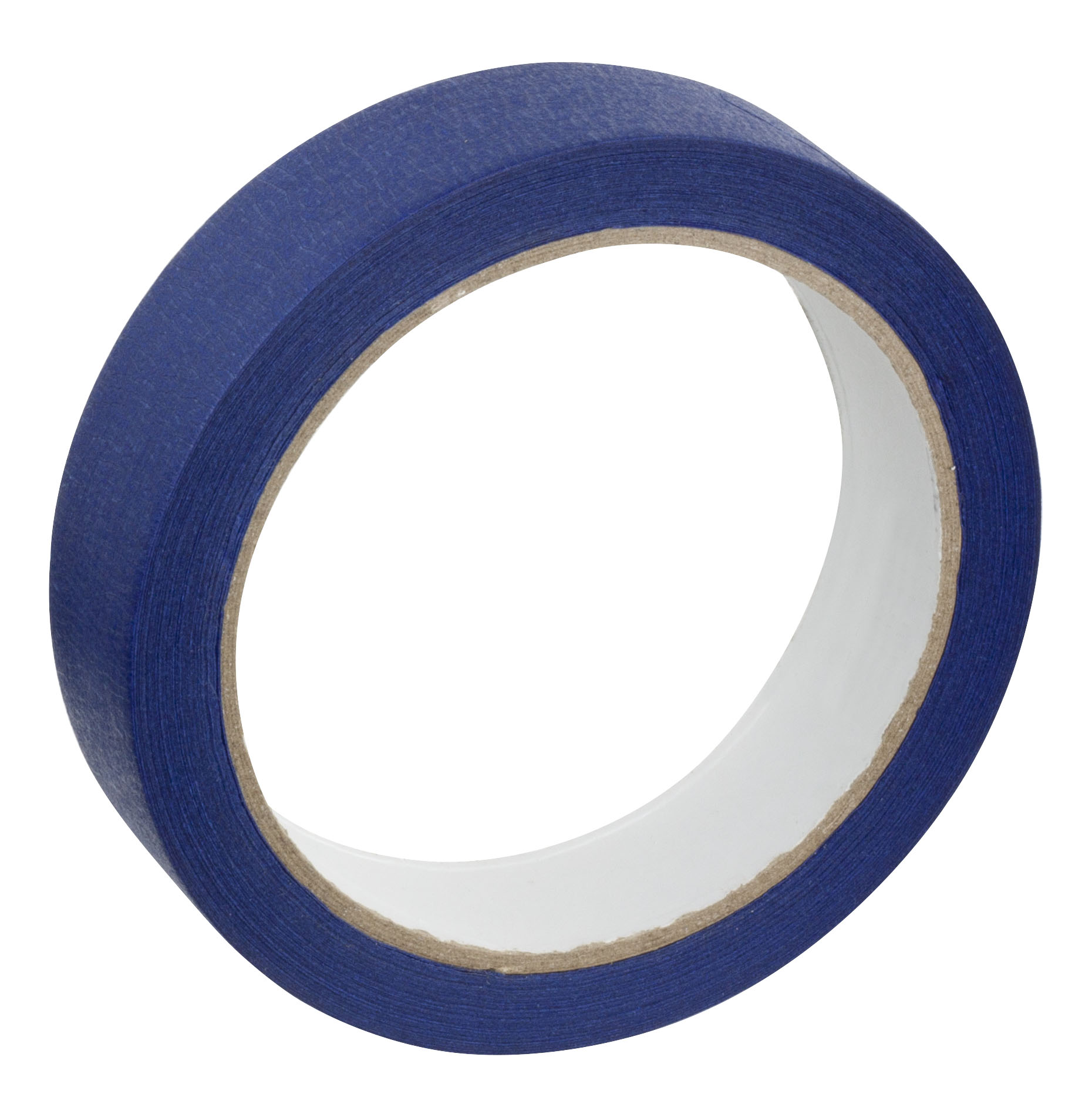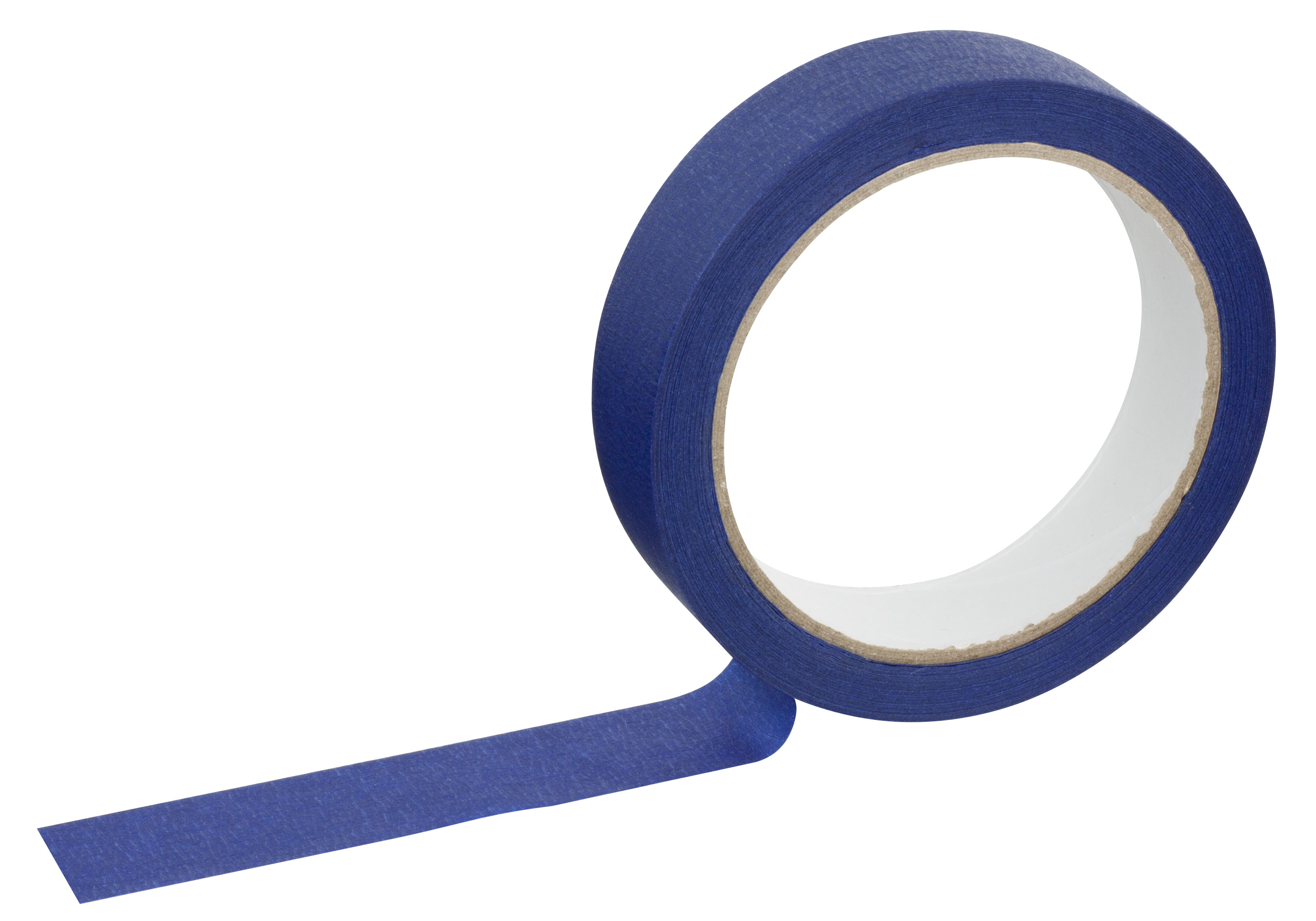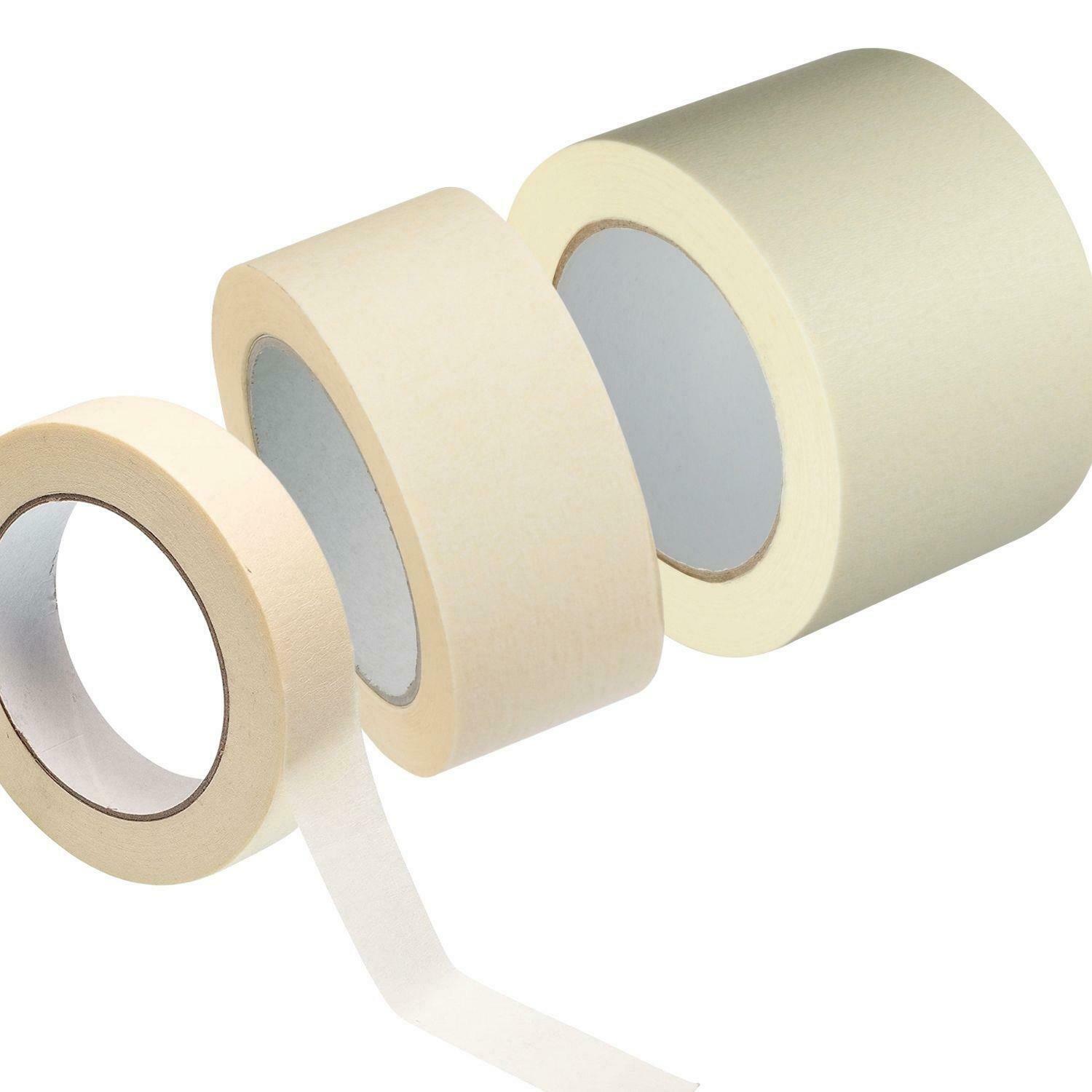Masking tape, also known as painter’s or decorator’s tape, is a pressure-sensitive tape used to mask areas during painting.
Keep reading to find out more about the different types of masking tape, how to apply it and answers to other frequently asked questions.
What is masking tape?
Masking tape is a low-tack, thin paper tape with a rubber-based adhesive backing. It is mainly used by professional decorators and DIYers to protect surfaces such as walls, skirting boards, switches and sockets during painting.
It can be removed quickly and easily without leaving any residue.
Who invented masking tape?
Masking tape was invented in America nearly 100 years ago in 1925 by an employee of manufacturing company 3M. Inventor Richard Drew came up with the idea after the growth in popularity of two-toned cars.
At the time, there was no quick and easy way for manufacturers to create a clean line when painting cars. Instead, workers were gluing newspapers to the chassis, which often damaged the paintwork. That was costly and time-consuming to fix, so Richard Drew spent two years experimenting before settling on the simple masking tape design we know today.
Types of masking tape
The table below shows the different varieties of masking tape we sell here at GTSE:
| Tape | Features | Technical Information | Image |
General purpose masking tape |
|
|
 |
Wide Masking Tape |
|
|
 |
Blue UV resistant masking tape |
|
|
 |
How to use masking tape
-
Clean the surface you’re applying the masking tape to. Masking tape doesn’t stick as well to dirty or dusty surfaces
-
Peel off the tape in short strips. This makes it easier to apply
-
Stick the tape down, flattening and sealing it as you go with your fingers to remove any air bubbles.
-
Apply as many layers of paint as required
-
When the paint feels dry to the touch, slowly remove the masking tape, peeling it off at a 45° angle
Which masking tape is best for paint?
General purpose masking tape can be used for painting with a brush or paint sprayer.
Our blue UV resistant tape is more suitable for applying on surfaces in direct sunlight. It’s also handy to use when painting with white or other light colours, because the vibrant blue colour will stand out against the paint.

Is masking tape safe for walls?
Masking tape was originally designed to use on interior walls, so it is safe to apply.
How long can you use masking tape on?
Masking tape should be peeled off when paint is dry to the touch. This is to ensure it doesn’t rip or damage the paintwork.
Other uses for masking tape
Masking tape can be used for more than just painting. Here are some creative uses for masking tape around the house:
-
To make labels for household items
-
During arts and crafts - make patterns or stick things together
-
To keep paint tins clean
-
To mark hole depth when drilling - just add a bit of masking tape to your drill bit, and drill until you get to the right depth
-
Hang up decorations

Is masking tape recyclable?
Although standard masking tape is made from paper, it is not usually recyclable, due to the rubber adhesive.
Other types of tape and their uses
-
Hazard tape - For marking floors, walls and obstructions in buildings
-
Aluminium tape - Ideal for creating airtight and watertight seals on pipes
-
Packaging tape - Use to pack parcels and boxes
-
Silicone tape - For waterproofing joints and making temporary repairs to leaking pipes
-
Duct tape - Use for repairs and securely fixing items
-
PVC tape - For insulating electrical cables and wires
Where to buy masking tape?
We sell a range of low cost masking tape and offer savings if you buy in bulk.
If you have any more questions about our masking tape, or any other tape products, please get in touch and contact us via live chat, email or telephone.



